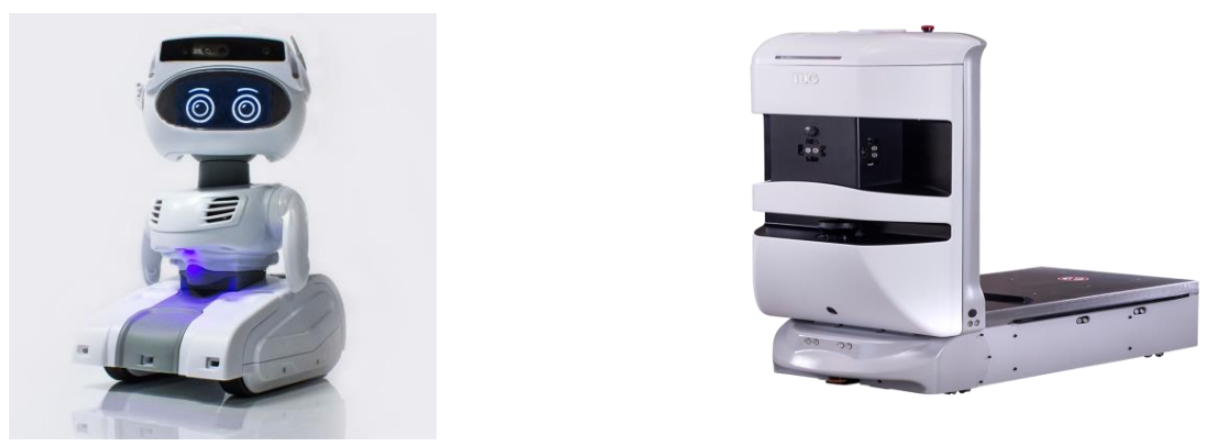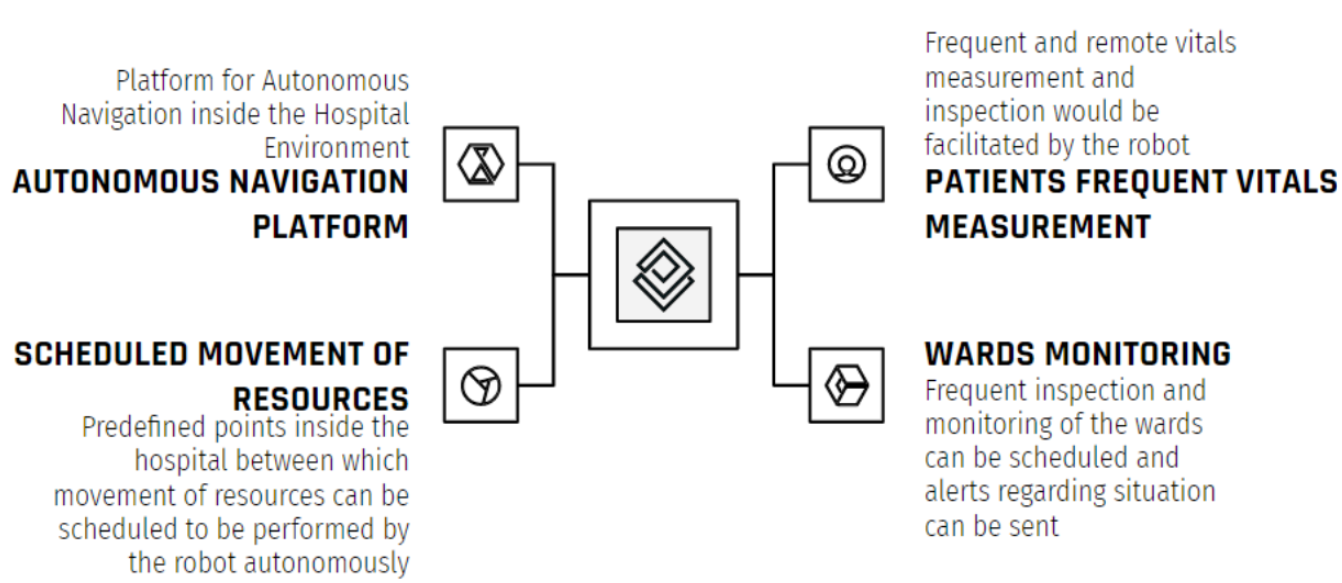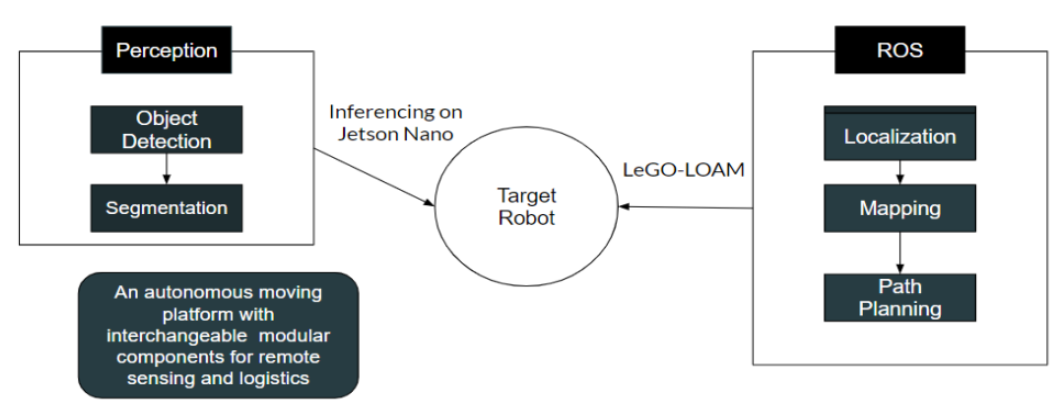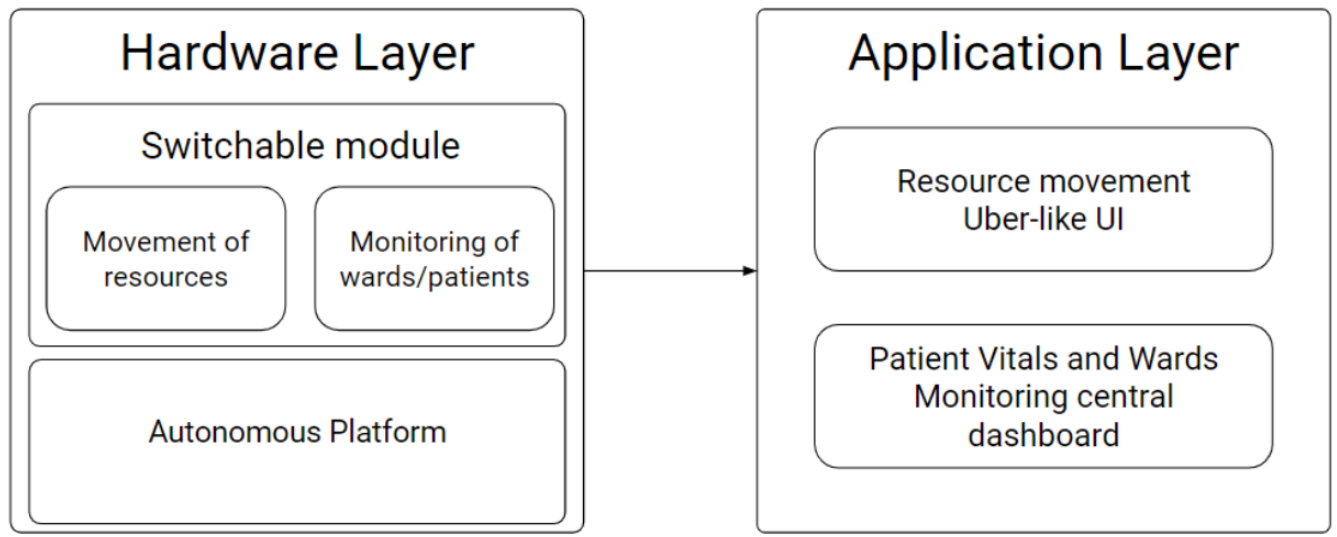This article was published as a part of the Data Science Blogathon.
Introduction
In the present situation, the coronavirus (COVID-19) pandemic is putting even the best hospitals worldwide under tremendous pressure. With rapid development in the field of robotics and automation, there have been intelligent systems that can play a crucial role in reducing the stress of hospitals. In this report, we have presented an idea of an autonomous bot capable of transporting materials from one place to another without human interference. Also, COVID +ve Patients require continuous monitoring frequently. Robotic solutions proposed in this article can monitor the above vitals parameters. The bot equips with LeGO-LOAM(Lightweight and Ground Optimized Lidar Odometry and Mapping) for navigation purposes, so the chances of collision are negligible. Furthermore, it consists of an Infrared camera and other sensors to automate tasks like vitals monitoring and Tele assistance. Establishing such systems will help control the outbreak, which in turn can aid in managing it effectively.

Problem Description
The global spread of COVID-19 has ushered in the idea of safe remote technology for the human to human interaction. In a pandemic situation, social distancing is a critical factor in preventing the spread of the virus. Still, it is said than done in the case of hospitals where there is a continuous interaction between the infected patients and the hospital staff.
We aim to reduce the number of contact points between an infected and a healthy person by developing a system of scheduled autonomous logistics responsible for moving medicines, food and other necessary items from one place to another.
It is evident by now that the Virusvirus is going nowhere soon. In such a situation, finding a way to live safely with the Virusvirus is imminent. For safe living and daily routines, tracking people for potentially carrying the Virusvirus is essential. It creates a need to monitor people frequently and daily to see if they develop symptoms of the Virusvirus over time. Such systems may be beneficial in resuming operations in offices and campus. Currently, thermal temperature measurement devices that can only measure temperature are used, which is not just the only indicator of the Virusvirus and thus has limitations in frequent monitoring applications.
Available Robotic Solutions
Misty Robot:
It is a screening robot developed by Misty Robotics which costs about 2,399$. It has the following pros & cons:
1) Face Recognition
2) Temperature Screening Through IR Camera
3) Sending Alerts
4) Respond to touch
5) Autonomous
6) Cannot measure other vital parameters
7) Too expensive
TUG Robot:
A TUG is an autonomous mobile robot made for hospitals by Aethon, a company based in Pittsburgh. Where TUG is the name for the hauling robot – the machine at the bottom that moves the cart. It uses a built-in map and sensors to navigate hospital halls and communicates with elevators, fire alarms and automatic doors via Wi-Fi. It has the following pros & cons:
1) It can lift about 680kg weight
2) Autonomous
3) Can take different types of loads. We can attach any load to its back
4) Non-compatible with low infrastructure hospitals
5) Costly, the company charges 1500$ – 2000$ per month for a single bot.

Source – https://www.mistyrobotics.com/
Functional Overview
For solving the above-stated problem, we aim to create a solution which has the following high-level functionalities:
Frequent Vitals Monitoring: In a typical working/institutional campus, people are mobile and travel from building to building during their working day. Therefore, we can install our system at the entry point of each significant area/building so that it can monitor the vitals like Temperature, Heart Rate, Blood Oxygen Saturation, and Respiratory Rate of the person each time they enter that building. That system may act as a potential replacement for the thermal scanners that are currently in use at the entry and exit of the systems.
Profiling and Analysis: When users use it frequently, we can generate a complete profile of the user based on their past vitals. It would help in creating trends of the vital parameters of the users and hence identify deviations from the regular readings and hence identify occurrences of Virusvirus as early as possible.
Scheduled movement of items: The central system can feed with the information for a thing to be moved from one place to another. The robot will take care of automated delivery, thus increasing productivity. The Delivery Points would be predefined, and the robot would be able to travel to and from autonomously.
Automated patient profiling: Every item transported(food, medicine, equipment) automatically builds up to the patient’s profile – what they eat and take medicines which is helpful in remote patient monitoring.

Fig. 2- Functional Overview
System Architecture
Hardware Layer:
Each piece of hardware equipment assembled and designed is converted into one product.
It consists of 2 two parts:
a) Autonomous platform: It is an autonomous platform to which different modules can be attached.

b) Switchable module: The bot’s functionality can be switched between Transportation or Vitals Monitoring by putting different modules on the autonomous platform.
Patients and Ward Monitoring:
In this module, an IR camera is used for temperature monitoring. Light sensing transmitters and receivers are used to gather blood pressure and heart rate. And finally, the camera is used to measure respiratory rate.

Resource Movement Module:
It handles the resource movement of necessary items like food and medicine using the independent, autonomous platform and the logistics system module. The venue is a fully autonomous separate section that can navigate from one point to another as per the commands received from the user/administration side.
It is controlled by a ROS(Robot Operating System) navigation stack, which takes in the input of sensors like LiDAR for map generation and IR Camera and ultrasonic sensors for obstacle detection and avoidance, respectively.
The Logistics system module consists of a storage system for storing the delivery items and an integrated software responsible for identifying the patient(to whom the delivery is to take place, thus maintaining security). A cab-sharing system-like interface for handling the server-side requests and maintaining the database for an individual patient based on the delivered items, which we call the Smart Patient Profiling System. It helps in creating an automated patient records system and thus increasing the productivity and manageability of the overall hospital system.

Communication layer: It contains the Protocol and Hardware module used for communication with the software application.
Application Layer: Includes the software part of the system.
a) Resource movement Uber-like UI:
To develop a system that generates a unique patient ID. Also, only that patient can access his food or medicines data.
b) Patient Vitals and Ward Monitoring Central Dashboard:
To develop a system in which patients’ vital signs can be monitored and send alerts if it detects any deviations from the average reading.


Cost Analysis

The cost of each component is taken from a famous E-Commerce Website.
Advantages
1) Bot can connect to the central server of the hospital and control all the transportation activities.
2) It can ensure that food and medicines can reach the patients securely and safely, without human interference. It increases the hygiene of the food.
3) It is contactless and fully autonomous, so the maintenance and cleaning costs are significantly less.
4) It provides Tele assistance to the patients to reduce the risk of direct exposure of doctors/nurses to the patients.
5) It can gather all vitals in just 1-2 seconds, so it monitors more patients in less time.
6) It can send alerts to the hospital staff if someone is found unhealthy.
Challenges
1) Low broadband connection at some places can be a significant problem in the robot’s functioning, as they require a fast and stable internet connection.
2) All medical data is stored in electronic form using these robots. Also, it must be secure to prevent hackers.
3) At the current time, people do not have much trust in AI. They prefer face-to-face interactions with doctors, so lack of confidence can also be a problem.
4) For such types of robots, high hospital infrastructure is required. They cannot work efficiently in lower hospitals.
Conclusion to Robotic Solutions
In this article, we have presented the use of robots in hospitals to reduce their work pressure. We have proposed using an autonomous bot that can transport food and medicines from one place to another as well as monitor the vital signs of the patients. The use of such robots increased tremendously during the Covid era. The current market size of this industry is USD 181.4 Billion in 2022 and can reach up to USD 952.3 Billion by 2032, growing at a CAGR of 18.0% from 2022 to 2032.
Key takeaways of this article:
1. Firstly, we have understood the urgent need for robotic solutions in hospital management.
2. Then, we discussed some existing solutions like Misty Robot and TUG Robot.
3. We have designed our proposed robotic solutions functional overview and system architecture.
4. After that, we discussed the approximate cost of making a prototype model.
5. Finally, the article concludes with some advantages and challenges.
It is all for today. I hope you have enjoyed my article on robotic solutions. If you have any doubts or suggestions, feel free to comment below. Or you can also connect with me on LinkedIn. I will be delighted to get associated with you.
Do check my other articles also.
The media shown in this article is not owned by Analytics Vidhya and is used at the Author’s discretion.





